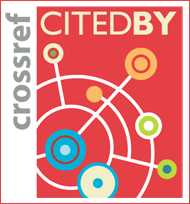ISSN : 1226-7155(Print)
ISSN : 2287-6618(Online)
ISSN : 2287-6618(Online)
Participation of nitric oxide pathways in interleukin 1-induced mechanical allodynia in the orofacial area of rats
Abstract
The purpose of the present study was to examine the role of peripheral nitric oxide (NO) pathways in the onset of interleukin (IL)-1β-induced mechanical allodynia in the orofacial area. Experiments were carried out on male Sprague-Dawley rats weighing 230-280 gm and surgical procedures were performed under pentobarbital sodium (40 mg/kg, i.p.). Under anesthesia, a polyethylene tube (PE10) was implanted into the subcutaneous area of one vibrissa pad, which enabled the injection of IL-1β or other chemicals. We subcutaneously injected 50 μL of IL-1β into a vibrissa pad through the implanted polyethylene tube with a 100 Hamilton syringe. After the administration of 0.01, 0.1, 1, or 10 pg of IL-1β, withdrawal behavioral responses were examined. The subcutaneous injection of saline had no effects on the air-puff thresholds. Following the subcutaneous injection of 0.01, 0.1, 1, or 10 pg of IL-1, the threshold of air puffs decreased significantly to 12± 3, 7 ± 2, 5 ±1, or 5 ± 1 psi, respectively, in a dose dependent manner. Pretreatment with L-NAME, a nitric oxide synthase (NOS) inhibitor, blocked IL-1β-induced mechanical allodynia. However, neither D-NAME, an inactive isomer of L-NAME, nor vehicle affected the IL-1β-induced mechanical allodynia. Subcutaneous injection of IL-1 increased the number of c-fos-like immunoreactive neurons, whereas pretreatment with L-NAME decreased this number, in the trigeminal caudal nucleus. These results suggest that pro-inflammatory cytokines and NO are important contributors to the pathogenesis of persistent and exaggerated IL-1β-induced pain states. Based on these observations, peripheral application of NOS inhibitors may be of therapeutic value in treating pain disorders in the clinic.
- GGSMBL_2009_v34n1_1.pdf979.5KB









